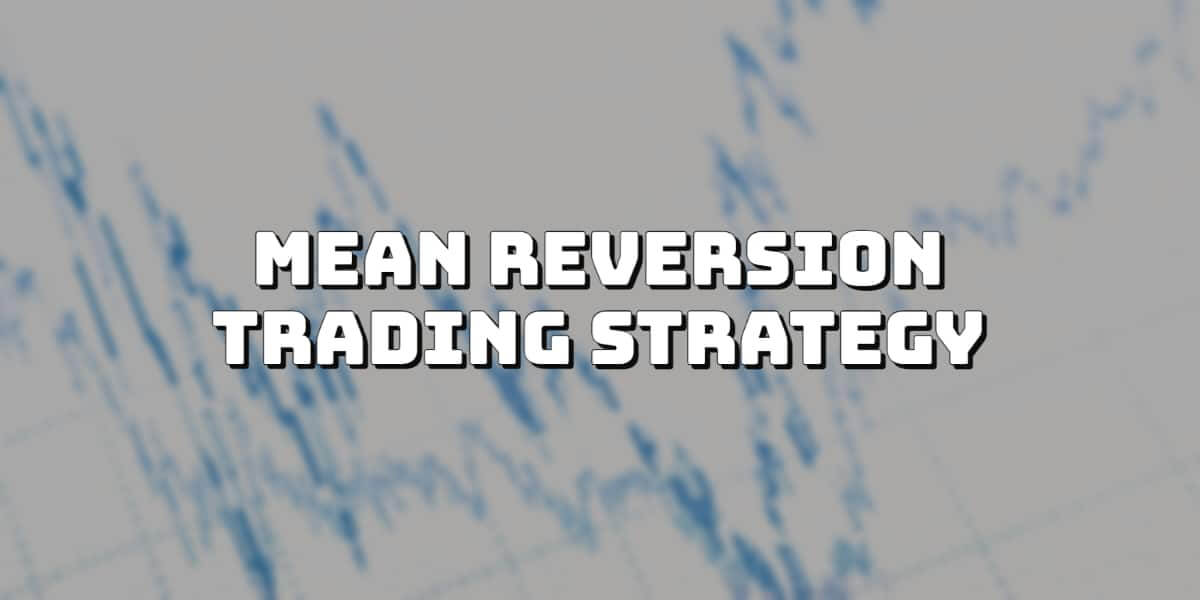What is Mean Reversion Trading Strategy – Get The Info
Have you ever thought about what the mean reversion trading strategy is? What does the term “reversion” really stand for in this trading system? And does it have any connections with automated trading, the stock market, time frames, diverse market conditions, or else?
First of all, regardless of your trading style and goal in the long run, as a motivated trader, you should deeply understand what the mean reversion trading strategy is. Understanding this strategy type would enable you to acquire additional profits and success in the market.
Supporters of the reversion-to-mean trading strategy are convinced that prices will return to the average once we witness a trend deviation. So, how do you deeply understand the mean reversion trading strategy and use it most effectively? Let’s see a complete picture at all its basics, shall we?
What does the Mean Reversion strategy represent?
Mean reversion is a trading theory that posits a market’s price’s tendency to return to a specific dataset’s historical average. Consequently, values deviating significantly from the established trend tend to reverse their direction and return to the prevailing trend.
The investment principle operates on the premise that there exists an underlying pattern in the asset’s price, yet in the short term, the cost can deviate from it before rectifying back to the overarching trend. Hence, one would initiate a long position by purchasing when prices fall below the average and execute a short work by selling when expenses exceed the standard.
Specific markets exhibit a higher tendency for mean reversion than others, such as the stock market. Although the stock market may experience temporary downward movements, it generally follows an upward trend, indicating a mean reversion characteristic. In contrast, commodities are typically categorized as non-mean-reverting assets since they follow sustained directions rather than reverting to a mean.
Implementation of 1 min trading strategy
When implementing a 1-minute trading strategy, traders often look for specific signals to guide their decisions. In the context of mean reversion, a “buy signal” may be triggered when the price of an asset falls below its historical average, indicating a potential opportunity for the cost to revert to the mean.
It’s vital to note that the effectiveness of a mean reversion strategy may vary depending on the market being traded, as some markets are more prone to mean reversion tendencies than others.
Can the mean reversion trading strategy be profitable?
While the mean reversion concept is a valuable tool in the market, it’s essential to recognize that it does not guarantee consistent profitability in trading. Prices can continue to deviate from the mean for extended periods, defying expectations and potentially leading to unfavorable trading outcomes. Although prices often tend to revert to the mean over time, the timing of such reversion is still being determined.
Therefore, while the mean reversion strategy can be utilized effectively in certain market conditions, careful analysis, risk management, and adaptability are crucial to increase the chances of profitability. It’s always advisable to find the mean reversion trading strategy pdf online from legitimate resources to learn all the details!
What does day trading mean reversion strategy look like?
The day trading mean reversion strategy, when implemented skillfully, can be a profitable approach. This strategy involves identifying assets that have deviated significantly from their mean values and taking positions in the expectation of price reversion. Traders often utilize technical indicators like the stochastic oscillator to confirm oversold or overbought conditions, increasing the likelihood of a reversal.
A stop-loss order is essential to manage risk and limit potential losses if the expected reversion does not occur. It’s important to note that the successful execution of this strategy requires diligent monitoring of price movements and adapting to changing market conditions.
By combining careful analysis, risk management techniques, and appropriate use of indicators, day traders can capitalize on mean reversion opportunities and achieve profitable outcomes.
Comparing the Mean Reversion Trading Strategy to Trend Following
Trading strategies can generally be categorized as mean reverting, trend following, or momentum trading. Trend-following methods aim to capture and ride the momentum of a market, whether it’s moving up, down, or in a range-bound manner.
On the other hand, mean reversion strategies focus on capturing price movements that oscillate around an average value. Traders employing this approach aim to enter positions when prices deviate significantly from the average and anticipate a return to the mean.
In contrast, trend traders identify the overall direction of a trend and open positions in alignment with it, holding their trades until the market exhibits a reversal. Therefore, while mean reversion strategies aim to profit from movements toward and away from an average, the trend-following method seeks to capitalize on the momentum and direction of the market.
What are the top mean reversion trading strategies?
Here are the top mean reversion trading strategies:
Mean reversion trading system
A mean reversion trading system utilizes indicators such as the simple moving average (SMA), moving average convergence divergence (MACD), and Bollinger Bands. These indicators help identify potential trading opportunities by analyzing price patterns and deviations from the mean.
Traders rely on the SMA to calculate the average price over a specific period and gauge price fluctuations. The MACD indicator assists in anticipating market reversals by assessing the convergence or divergence of moving averages. Bollinger Bands provide insights into price distance from the mean using standard deviations, indicating potential mean reversion opportunities.
Mean reversion pairs trading
Pairs trading is a mean reversion strategy focusing on identifying two correlated assets. Traders seek price deviations between the assets and aim to return the reversal to the historical correlation.
Pairs trading offers the potential to profit from relative price discrepancies between correlated instruments, regardless of the overall market direction. When one asset is considered undervalued relative to the other, traders may buy the undervalued asset and sell the overvalued one. By doing so, they anticipate the prices will eventually revert to their typical relationship.
Besides these two, there are also:
Simple moving average: SMA calculates the average price to identify fluctuations.
MACD: It helps anticipate market reversals.
Bollinger bands: They assess price distance from the mean.
Does that mean reversion functions in trading?
Many successful traders and investors believe that mean reversion is effective, but its suitability depends on trading style and goals.
However, it’s important to note that mean reversion does not occur instantly. It can take considerable time for the market to correct itself if it does at all. As a result, traders utilizing this approach must exercise patience, making it less suitable for highly short-term trading styles like scalping.
One component of a comprehensive strategy
Mean reversion should be viewed as just one component of a comprehensive trading strategy.
A thorough analysis of the specific asset is essential before taking a position. Changes in market prospects can reduce the likelihood of mean reversion.
The efficient market hypothesis (EMH) presents a counterargument to mean reversion. According to this theory, market prices reflect all available information, making it impossible to outperform the market consistently. For instance, if a financially strong company experiences a significant adverse change in its outlook, its stock price will likely recover once its growth trajectory improves.
Therefore, stock price fluctuations are driven by factors beyond mere reversion to a mean.
The post What is Mean Reversion Trading Strategy – Get The Info appeared first on FinanceBrokerage.
























